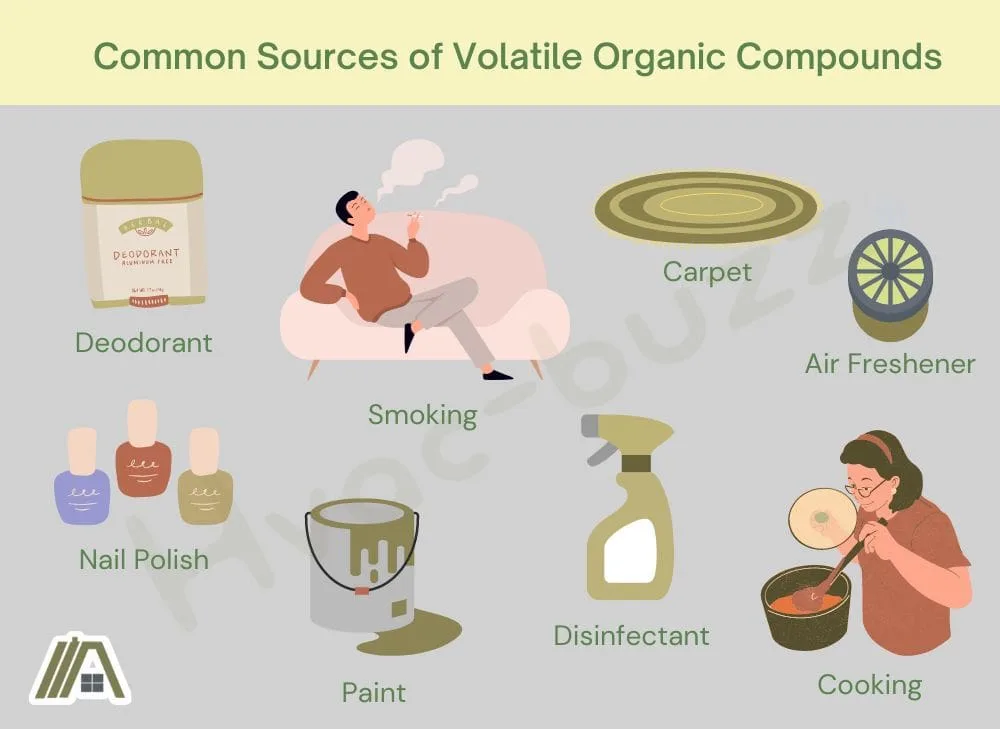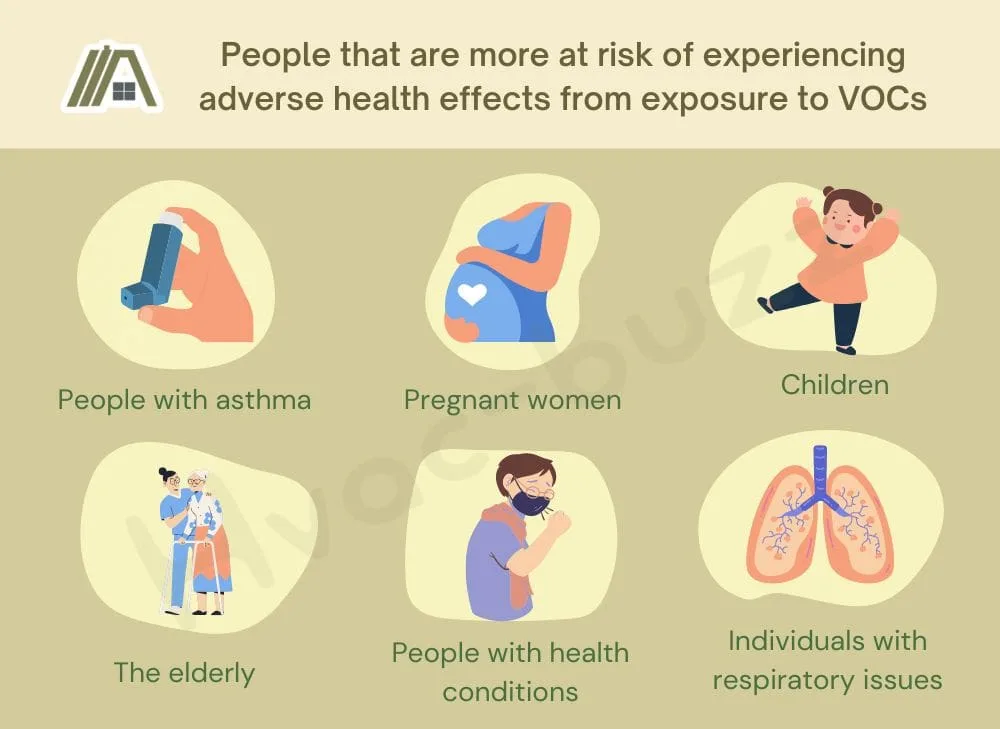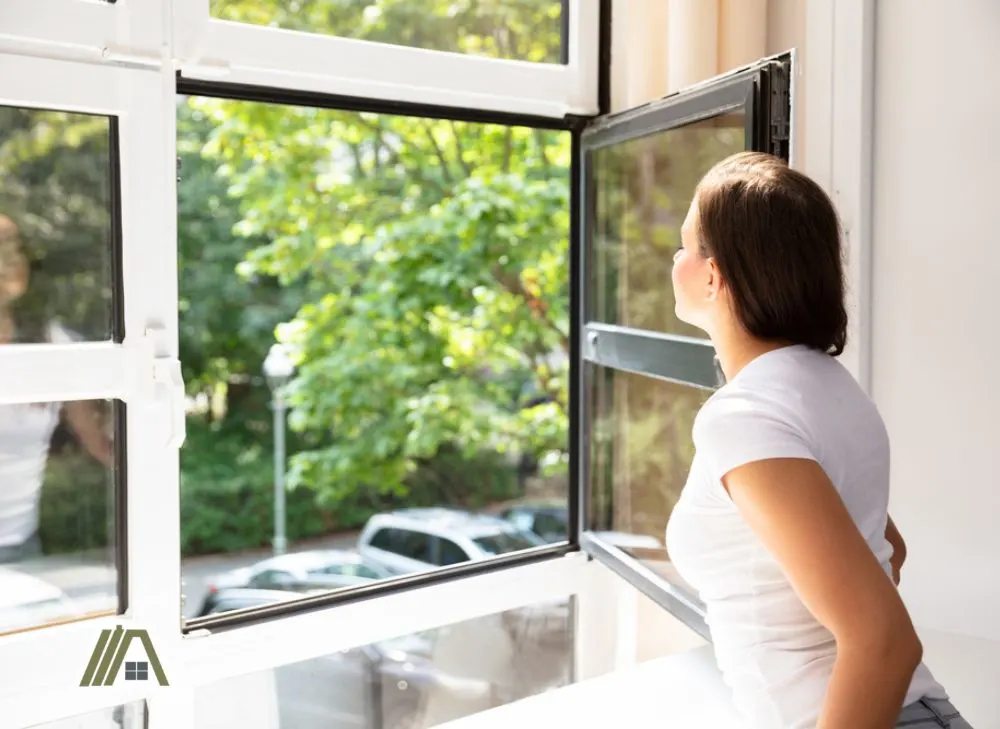Volatile organic compounds (VOCs) have become essential ingredients in the production of numerous products and materials. They are used in various sectors, including printing, pharmaceuticals, furniture, and manufacturing industries.
Many VOCs are categorized as air toxins by the US Environment Protection Agency (EPA) and have been linked to multiple health challenges and environmental issues. In this article, I provide information on the sources of VOCs, the health effects of VOCs, and how to reduce the concentration of these volatile organic compounds in your home.

VOCs are volatile (readily released as gas) organic (containing carbon) compounds (made up of multiple elements). They are dangerous because of how many everyday items and products release VOCs, the fact that they are hard to control (volatility), and because they cause adverse health effects.
Defining VOCs
Volatile organic compounds are chemicals that are emitted into the air as gases from certain solids or liquid items and during certain activities. Their name is actually quite descriptive of what they are, so let’s break it down.
VOCs are volatile. This means that they have a low water solubility (they don’t easily dissolve in water) and a high vapor pressure (they tend to want to exist in a gaseous state). Both of these characteristics mean that VOCs evaporate under normal indoor atmospheric conditions.
VOCs are organic. This means that they contain carbon atoms and typically carbon-carbon or carbon-hydrogen bonds.
VOCs are compounds. This means that they are not individual atoms or molecules, but rather a collection of elements that all interact to give VOCs their unique characteristics.
Many organic compounds present in the atmosphere today are not naturally occurring. Instead, they are man-made, formed during combustion or industrial processes. As such, the emission of VOCs is a major cause of air pollution both indoors and outdoors.

The presence of VOCs in the air has different implications in indoor and outdoor locations. In Indoor settings, VOCs are discussed in terms of the potential adverse effect they pose on the health of humans and animals.
Outdoors, VOCs are a source of concern mainly because of their ability to create photochemical smog that can affect the environment negatively.
What Makes VOCs Dangerous?
They Are Prolific
We live in a world where almost everything around us has some sort of chemical constitution. As a result, it’s impossible to completely eliminate VOCs from your space.
There are numerous sources of VOCs and in this article, I’ll be focusing on indoor VOCs for two reasons:
- When VOCs are released into the home, they concentrate in the home as opposed to dissipating into the atmosphere.
- You will have more control over what VOCs are released in your home (if you know what’s producing them).
Here are some common sources of volatile organic compounds.
| Personal Care Products | Building Materials/Finishes | Household Items | Activities |
| Deodorants | Adhesives | Cleaning products | Smoking |
| Nail polish and nail polish remover | Vinyl flooring | Air fresheners | Wood burning |
| Cosmetics | Paints and other solvents | Disinfectants | Printing/photocopying |
| Feminine hygiene products | Composite wood items | Insect repellant | Dry cleaning |
| Skincare products | Carpet | Furniture and upholstery | Cooking |
| Varnishes | Office items like printers, carbonless copy paper, and correction fluid | ||
| Aerosol sprays | Dryer sheets and dry cleaning products |

As you can see, VOCs are present in myriad indoor items. The fact that they have numerous sources makes it quite difficult to completely eliminate them from your home.
The Volatility Means They Are Hard to Control
The volatility means that it is hard to control them.
Once an item containing these chemicals enters your house, they are released into the air through a process known as off-gassing.
The off-gassing process can be accompanied by a distinct smell like the smell associated with new furniture, cars, painting, or even the fragrance from common household products, like disinfectants.
However, not all VOCs give off a smell, and you could have huge quantities in your house without even realizing it.
Certain household items off-gas for a few years after they are bought, but there are some items that would release VOCs throughout their lifespan.
Also, according to the EPA, VOCs can remain in the air long after the activity that caused the emission is completed.
Since they cannot be seen with naked eyes, the only way to determine if there are VOCs in your home is by using air quality monitors (amazon link).
VOCs Are Capable of Causing Adverse Health Effects
The prolific and volatile nature of VOCs would be fine if they were harmless compounds but they are not.
The EPA categorizes many VOCs as air toxins. Air toxins in this context refer to pollutants that cause or may cause cancer or other serious health challenges, such as birth defects and organ damage.
Certain VOCs can cause adverse health effects even at low concentrations. While some other VOCs cannot cause serious health challenges, except if the individual is exposed to high concentrations of the toxin or low concentrations over a prolonged period.
The effect VOCs have on individuals typically depends on factors like the amount of chemicals in the air, the degree or length of exposure, and the age as well as the health condition of the individual.
Everybody isn’t going to have the same reaction to these chemicals and there are certain categories of people that are more at risk of experiencing adverse health effects from exposure to VOCs.
- People with asthma
- Pregnant women
- Children
- The elderly
- People with health conditions
- Individuals with respiratory issues or people who are sensitive to chemicals

Exposure to toxic VOCs, can interfere with bodily functions and lead to a range of health challenges. Here are some of the health effects of indoor VOCs.
| Short-term effects | Long-term effects |
| Headaches | Cancer |
| Nausea | Liver damage |
| Vomiting | Kidney damage |
| Dizziness | Damage to the central nervous system |
| Respiratory and breathing issues | Reproduction and genetic abnormalities |
| Worsening of asthma symptoms | Weakened immune and nervous system |
| Nose and throat discomfort | Abnormal brain function in children |
| Eye irritation | Hormonal imbalance |
| Allergic skin reactions | |
| Fatigue |
In addition to these health challenges, the EPA has connected VOCs to sick building syndrome (SBS), which is a condition where building occupants experience symptoms that aren’t as a result of any specific illness but are instead linked to the time spent in the building.
What Level of VOC is Dangerous?
A single household item or activity can release multiple VOCs. So, most cases of indoor pollution usually involve various compounds.
The problem with this is that the toxicity levels of VOCs differ, making it almost impossible to fix a particular limit on the total volatile organic compounds (TVOCs).
Certain VOCs are identified as carcinogens or are known to cause serious health conditions and there are some that aren’t as dangerous. So, judging the toxicity of the VOCs in your space based on their total value would be a misguided approach.
This means that the exact level of toxicity is dependent on the quantity of individual compounds and how dangerous each of these chemicals is.
Additionally, most health-related research is conducted on single compounds, so there isn’t enough information on the health effects of a combination of compounds.
Also, although there is research on the effect of VOCs on residential buildings, there is currently no federal or state standard for levels of VOCs in non-industrial settings.
Basically, you will be exposed to VOCs and you just have to accept that there is a risk involved with this. The best thing you can do is try your best to reduce the VOC levels in the house.
How to Reduce VOC Levels in the House
According to the EPA, concentrations of many VOCs are up to ten times more indoors than outdoors.
One of the reasons for this is that indoor spaces are enclosed.
If the right precautions aren’t taken, residents will be exposed to chemicals that pose risks of serious health conditions after prolonged exposure.
Here are ways you can reduce the level of VOCs in your home:

- Increase the ventilation in your house. You can do this by opening windows and doors, installing a mechanical ventilation system, or by using exhaust fans.
- Keep indoor temperature and humidity as low as possible. Chemicals off-gas more in high temperatures and humid conditions, so this helps to reduce the rate of off-gassing.
- Open windows and doors while painting or working with products that contain high amounts of VOCs.
- Use an activated charcoal filter (amazon link). Regular HEPA filers cannot remove VOCs from the air, only activated charcoal filters are suitable for this purpose (ductless bathroom fans are a good option).
- Avoid smoking indoors; if you must, the room should be properly ventilated.
- Going forward, check the composition of items and only buy those that have low VOC levels.
- Avoid buying vinyl and engineered wood items.
- Buy second-hand furniture. New furniture releases high amounts of VOCs, so buying old items is a great way to reduce emissions.
- Keep new furniture outdoors for a few weeks after purchasing them. Alternatively, you can buy floor models, which must have released a reasonable portion of the VOCs while out in the open.
- Get indoor plants.
- Follow label instructions while using products.
- Limit the use of products with high VOC levels.
Sources
https://www.epa.gov/indoor-air-quality-iaq/what-are-volatile-organic-compounds-vocs
https://www.epa.gov/indoor-air-quality-iaq/volatile-organic-compounds-impact-indoor-air-quality
https://www.health.state.mn.us/communities/environment/air/toxins/voc.htm
https://www.lung.org/clean-air/at-home/indoor-air-pollutants/volatile-organic-compounds
https://www.sciencedirect.com/topics/medicine-and-dentistry/volatile-organic-compound
https://www.epa.gov/sites/default/files/2014-08/documents/sick_building_factsheet.pdf
https://www.euro.who.int/__data/assets/pdf_file/0010/156970/euro_series_78.pdf

